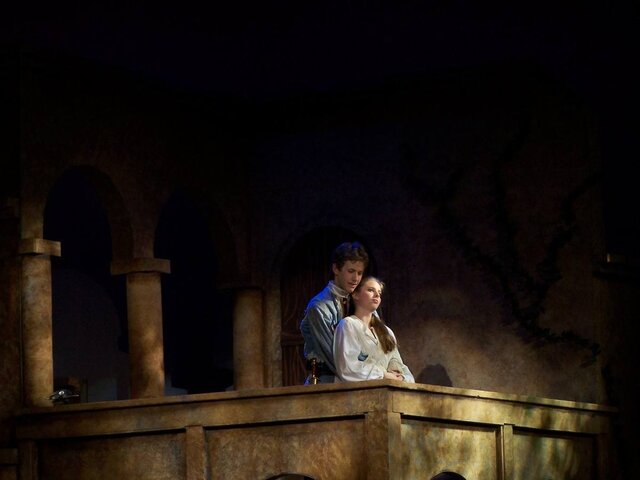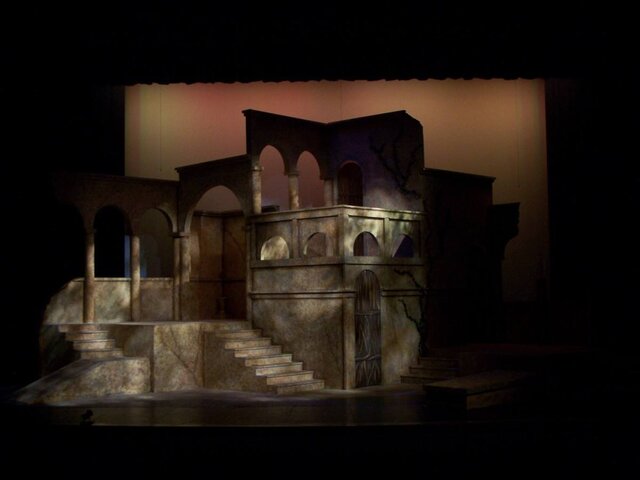You are using an out of date browser. It may not display this or other websites correctly.
You should upgrade or use an alternative browser.
You should upgrade or use an alternative browser.
Help understanding the math behind donuts
- Thread startertricia0802
- Start date
WooferHound
Well-Known Member
Interesting, I have never heard of anyone cutting holes in gels intentionally. What Effect are you trying to achieve. The only doughnuts that I know of in lighting are made from metal and do not pass any light outside of the hole.
The only math I know about doughnuts is that, if you are the guy making the run to get doughnuts, then...
Doughnuts = Stagehands X 2
The only math I know about doughnuts is that, if you are the guy making the run to get doughnuts, then...
Doughnuts = Stagehands X 2
jglodeklights
Well-Known Member
I don't know the math, but to answer WooferHound-
The concept is the same as split gels. More mileage per instrument. Rather than having to color an area and then have another instrument to create a ring of light within that area, you can use one.
The concept is the same as split gels. More mileage per instrument. Rather than having to color an area and then have another instrument to create a ring of light within that area, you can use one.
I'm not sure there is any mathemagical formula. When a solid donut is used purely to sharpen a gobo, it's a trade-off between sharpness and intensity. Too small a hole and the image will be very sharp, but not very bright. Too large a hole, and the image will be bright, but not as sharp as it could be....Does anyone have any insight as to what that math is?
The color donuts that I saw Tom Skelton (as far as I know, the originator of the practice) use, had about a 3" hole in a 7.5" x 7.5" frame (Altman 360Q's; S4's had not yet been invented). A saturated color, say R79 or R80 made the donut, the hole was filled with R60 or R61. Actually I think it was a full cut of R60 plus a cut of R80 with a circle cut out, both in the same frame, so no tape was required.
The standard City Theatrical donut for a 6 1/4" x 6 1/4" fixture has a hole size of 3 3/16". Apollo offers two sizes of holes for the same frame size: 3 3/16" and a smaller 2 1/2".
One has to imagine that these companies have people who know what they're doing, and have achieved the optimum size(s). That being said, gelframes, color media, and BlackWrap are inexpensive, so just keep experimenting until you achieve the desired result.
Once it's all over, be sure to come back and tell us how it worked (ideally with pictures--we
Last edited:
tricia0802
Member
What Effect are you trying to achieve?
There is a really cool effect that happens when you use a donut gel with a gobo. If the hole is the proper size, then the negative space of the gobo becomes the color of the gel. For example, if you have an R89 gel with a donut hole filled with R59, the light of the gobo beam will be colored purple and the area that is usually black with be tinged green.
It looks really cool especially when haze is added
Thanks everyone for your responses. I will just have to experiment with the donut sizes listed
Last edited:
meatpopsicle
Active Member
There is a really cool effect that happens when you use a donut gel with a gobo. If the hole is the proper size, then the negative space of the gobo becomes the color of the gel. For example, if you have an R89 gel with a donut hole filled with R59, the light of the gobo beam will be colored purple and the area that is usually black with be tinged green.
It looks really cool especially when haze is added
Thanks everyone for your responses. I will just have to experiment with the donut sizes listed
that is very cool. I can't wait to try it.
I suspect he/she means that the optimal donut hole size is the same as that of the gate of the ERS. But this doesn't hold true, as one wouldn't use a 3" donut with a Source Four 10° or 5°. One could, but very little light would come out.Our Lighting Professor said that the size of the hole is the same size as the aperture? Aperture being a manufactured doughnut? The size of a real doughnut hole? Changing from light to light?
Again, I don't think the hole size is all that important for the effect to work. However, I've only seen it done with the more saturated color being the donut and the lighter color being the hole. I suspect this works better than the converse.There is a really cool effect that happens when you use a donut gel with a gobo. If the hole is the proper size, then the negative space of the gobo becomes the color of the gel. For example, if you have an R89 gel with a donut hole filled with R59, the light of the gobo beam will be colored purple and the area that is usually black with be tinged green. ...
Last edited:
I'm not sure there is any mathemagical formula. When a solid donut is used purely to sharpen a gobo, it's a trade-off between sharpness and intensity. Too small a hole and the image will be very sharp, but not very bright. Too large a hole, and the image will be bright, but not as sharp as it could be.
In the late 1990's we were messing around with custom gobos and various barrels for the ETC Source Four, trying to improve the clarity and crispness of the projected image. I found that a custom donut, cut to replicate the actual 'live area' used within a pattern had the best combination of halo elimination and light transmission. For instance- a corporate logo that runs the full width of the 64mm image area but uses only 20mm of the height would project best when a donut was cut in similar proportions to this custom artwork.
Having tried a variety of shapes and sizes, the current 2.5 inch 'donut hole' replicates the 64mm live image area of a typical B sized gobo. (2.5inch x 25.4mm = 63.5 mm). In the same manner, the 3.00 'live area' for an A sized gobo is roughly 76mm. The 'donut hole' produced for crisp A sized gobo projection had an 84mm opening.
Mind you, theatrical breakup gobos are often used out of focus, eliminating the need for a donut. Corporate logos, on the other hand, generally are projected as a crisp image. Back in the day many corporate logo patterns were produced for use within the Altman 360Q and other theatrically-minded fixtures. Our intent was to use slightly less than the maximum 'live area' when producing corporate patterns (especially in the A size), as to minimize the fuzziness seen along the outer portion of the pattern.
So yes, there were some mathmatical techniques used along with actual trial and error here at Apollo prior to our determining which sizes of donut holes to offer our hungry friends!
I hope this helps!
jglodeklights
Well-Known Member
Another use for a donut isn't simply getting crisper gobo/pattern projections, but increasing the apparent sharpness of shutter cuts and drastically reducing flare. When a tophat simply isn't enough- you can donut. When your square is kinda blurry- you can donut. By cutting out extraneous light rays coming from oblique angles (sorry ETC and Altman, your lenses are cut from really crappy glass and your coatings suck as well), you increase the overall contrast of the beam image.
Dionysus
Well-Known Member
I commonly use gel-frame cardboard doughnuts in old Strand ERS fixtures to allow them to be decently sharp along with other mostly older or high-end fixtures. Especially when using gobos or when needing nice shutter cuts.
Easily made from old paper gel frames cut in half with either blackwrap or more FR cardstock put in and cut into a doughnut.
Of course metal doughnuts in the gobo slot work great too.
Easily made from old paper gel frames cut in half with either blackwrap or more FR cardstock put in and cut into a doughnut.
Of course metal doughnuts in the gobo slot work great too.
Re: Color donut examples?
Here are a couple of shots from a production of Romeo and Juliet I lit a long time ago that used a R2004 donut paired with the appropriate warm or cool filter with a breakup gobo:


The effect here was meant to be subtle to encourage the audience that the breakups were light coming through trees by giving them a slight green halation. I used no math in the creation of the donut. The aperture was actually diamond shaped IIRC because I folded the gel in quarters and cut the center corner starting small and increasing the size of the hole using the trial and error method.
Here are a couple of shots from a production of Romeo and Juliet I lit a long time ago that used a R2004 donut paired with the appropriate warm or cool filter with a breakup gobo:


The effect here was meant to be subtle to encourage the audience that the breakups were light coming through trees by giving them a slight green halation. I used no math in the creation of the donut. The aperture was actually diamond shaped IIRC because I folded the gel in quarters and cut the center corner starting small and increasing the size of the hole using the trial and error method.
Similar threads
- Replies
- 5
- Views
- 677
- Replies
- 2
- Views
- 351
- Replies
- 6
- Views
- 894
Users who are viewing this thread
Total: 1 (members: 0, guests: 1)


